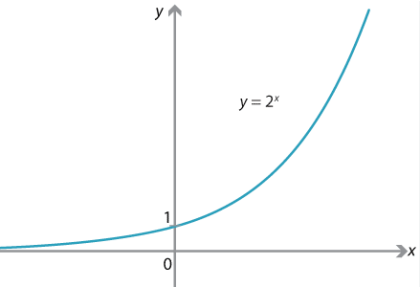
Today, let’s discuss the relative placements of exponents on the number line.
We know what the graph of looks like:

It shows that when is positive, with increasing value of
,
increases very quickly (look at the first quadrant), but we don’t know exactly how it increases.
It also shows that when is negative,
stays very close to 0. As
decreases, the value of
decreases by a very small amount.
Now note the spacing of the powers of 2 on the number line:

and so on…
So every power of 2 is equidistant from 0 and the next power. This means that a power of 2 would be much closer to 0 than the next higher powers. For example, is at the same distance from 0 as it is from
.
But is much closer to 0 than it is to
,
etc.
Let’s look at a question based on this concept. Most people find it a bit tough if they do not understand this concept.
Question: Given that , which of the following values for
yields the lowest value for |
|?
A) 35
B) 90
C) 91
D) 95
E) 105
We need the lowest value of ||. We know that the smallest value any absolute value function can take is 0. So
should be as close as possible to (
) to get the lowest value of |
|.
Let’s try to simplify:
()
Which value should take such that
is as close as possible to
?
is obviously larger than
. But is it closer to
or
or higher powers of 2?
Let’s use the concept we have learned today – let’s compare with
and
.
So now if we compare these two with , we need to know whether
is closer to 0 or closer to
.
We already know that is equidistant from 0 and
, so obviously it will be much closer to 0 than it will be to
.
Hence, is much closer to
than it is to
or any other higher powers.
We should take the value 90 to minimize ||, therefore the answer is (B).
Here is a video discussing exponents on the number line.

Founder, sole curriculum creator and webinar instructor for ANA PREP, Karishma has been working in the test prep industry for almost 20 years now, of which 15+ are in GMAT exam preparation. She is an expert of Quant, Verbal and Data Insights and is known for her simple and elegant solutions. Her venture, ANA PREP, is one of the best GMAT online coaching platforms. Contact her at karishma@anaprep.com
Learn how identifying patterns in exponents can help simplify even the trickiest GMAT number properties problems.
https://anaprep.com/number-properties-recognising-patterns-in-exponents/
Understand how to logically compare expressions with exponents using key GMAT exponent strategies.
https://anaprep.com/number-properties-comparing-terms-with-exponents/
Explore an insightful exponent trick that helps tackle exponential equations in GMAT CR and Quant sections.
https://anaprep.com/number-properties-interesting-property-of-exponents/
Master how pattern recognition can lead to faster and more accurate answers on GMAT number property questions.
https://anaprep.com/arithmetic-pattern-recognition-in-number-properties/